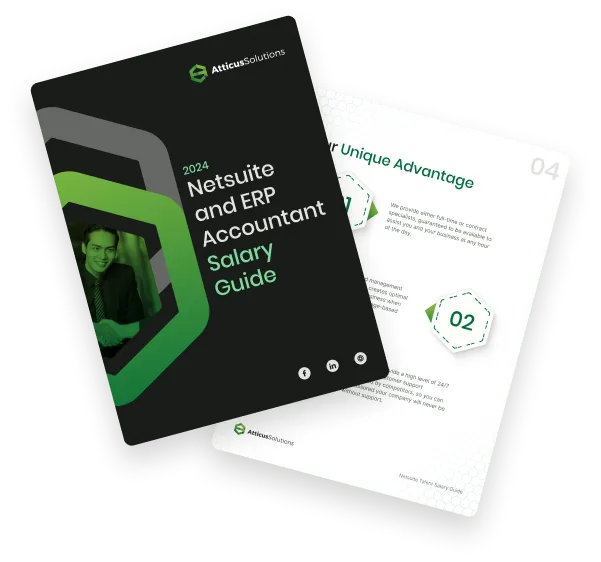Smarter Hiring, Bigger Returns: How Data-Driven Recruiting Saves Money and Fuels Growth

Hiring isn’t just an HR function—it’s a profit driver when done right. Yet, many companies still treat recruiting as an operational expense rather than a strategic investment.
The result? Slow hiring, high turnover, and costly mistakes that drain revenue.
Traditional hiring relies on gut instinct over data, leading to lost productivity, wasted salaries, and poor hires that disrupt teams.
A data-driven approach changes the equation by helping businesses:
- Hire faster and reduce vacancy costs.
- Improve quality-of-hire and retention.
- Use metrics CFOs care about to drive financial returns.
Let’s break down how smarter hiring can save money and fuel business growth.
The Hidden Costs of Hiring the Wrong Way

Many companies underestimate how much poor hiring costs them.
The real cost-per-hire: Beyond salary
A bad hire costs 30 percent of their annual salary—and that’s just direct expenses. Consider:
- Vacancy costs: Lost productivity for every unfilled role
- Manager time: Hours spent on recruiting instead of revenue-generating work.
- Turnover expenses: Training, rehiring, and lost team morale.
How to estimate your hiring costs
- Add up recruiting, training, and hiring costs.
- Factor in productivity loss from vacant roles.
- Divide by successful hires per year.
If you’re not measuring this, you’re likely spending more than you think.
The ripple effect of bad hires
One poor hire doesn’t just impact their role—it hurts the entire business.
- Low morale: Disengaged employees bring down team performance.
- Customer impact: A bad hire in sales or support can drive customers away.
- Employer brand damage: Struggling to retain employees makes future hiring harder.
If you’re constantly rehiring, you’re leaking money. A data-driven approach helps break the cycle.
Hiring Metrics That Actually Matter to Your CFO
Your CFO doesn’t care about how many resumes you screen. They care about numbers that affect revenue.
Time-to-hire: Every lost week = lost revenue
- The average time-to-hire is 36 days, but top candidates are off the market in 10 days.
- A vacant sales role means lost revenue for every week it’s open.
How to fix it: Automate screening and streamline interviews to cut hiring time by 50 percent.
Quality-of-hire: Why fast hiring isn’t enough
- A bad hire costs 30 percent of salary, but the real loss includes productivity and team morale.
- Top hires ramp up faster, produce more, and stay longer.
How to measure: Track performance, ramp-up time, and retention in the first 90 days.
Retention rates: Why keeping top talent saves thousands
- Replacing an employee costs 50 to 200 percent of their salary
- Companies using predictive analytics cut attrition by 20 to 30 percent
- If new hires leave within 12 months, something is broken in hiring or onboarding
Diversity’s financial impact
- Companies with diverse leadership perform 35 percent better
- Inclusive teams make better business decisions 87 percent of the time
- Broader talent pools drive faster innovation and market expansion
Where businesses go wrong
Many companies set diversity goals but fail to track whether they’re making progress. By measuring applicant demographics, promotion rates, and retention by diversity category, you can see if your hiring practices are actually working or if you’re just checking boxes.
Investing in the Right Tech: What’s Worth It?
Recruiting technology promises to streamline hiring, improve candidate quality, and reduce costs, but not every tool is worth the price. Before investing in software, businesses need to evaluate whether the return justifies the cost.
The actual cost of hiring software: What small vs. large businesses need
The cost of recruiting tech varies widely depending on company size and hiring volume:
- Small companies: $2,400 to $10,000 per year for entry-level ATS.
- Mid-sized businesses: $10,000 to $50,000 per year for analytics and automation.
- Enterprises: $100,000+ per year for large-scale hiring.
If hiring is infrequent, a pay-per-use model may be better than a full-suite system.
When does hiring tech pay off?
- One to three months: Faster screening, reduced recruiter workload.
- Three to six months: Lower time-to-hire, better candidate experience.
- Six to twelve months: Cost savings from fewer hiring mistakes.
If metrics don’t improve in six months, rethink your investment.
How to test recruiting solutions before committing:
- Use free trials or short-term contracts before locking in.
- Track before-and-after results (time-to-hire, cost-per-hire, retention).
- Ensure it integrates with existing HR systems to avoid inefficiencies.
The Big Picture: Why Smarter Hiring Fuels Long-term Growth

Faster hiring = better employer brand = stronger candidates
A slow, frustrating hiring process hurts your reputation and costs you top talent.
- Candidates drop out if the process is too slow.
- Poor hiring experiences hurt business reputation.
- Companies with strong hiring brands attract better applicants, saving money long term.
Data-driven hiring keeps candidates engaged, even if they aren’t selected.
Why top companies hire fast:
- They remove bottlenecks and streamline screening.
- They automate repetitive hiring tasks.
- They make confident decisions, securing top talent first.
Slow hiring leaves you behind the competition.
Internal promotions vs. external hiring: Where you’re wasting money
- Internal hires ramp up faster and cost less to train.
- They’re more likely to stay, reducing turnover costs.
- Tracking skills and mobility data helps identify who to promote.
Over-relying on external hiring drives up costs unnecessarily.
Predictive hiring: Preventing last-minute scrambles
- Forecast talent needs before roles become vacant.
- Build a hiring pipeline to prevent revenue loss.
- Stop rushed, reactionary hiring that leads to bad decisions.
Strong companies anticipate hiring needs before they become problems.
Your Game Plan: How to Make Hiring Pay for Itself

A data-driven hiring strategy is about turning insights into action. Here’s how to optimize your hiring process for financial returns.
Calculate your hiring ROI
To see if your hiring process is working, measure:
- Cost-per-hire = (total recruiting expenses ÷ number of hires)
- Time-to-fill = (average days a position remains open)
- First-year retention rate = (percentage of new hires still employed after 12 months)
If costs are rising and quality hires aren’t sticking, it’s time to refine your strategy.
Getting leadership buy-in: How to frame hiring as a business investment
Executives care about numbers. To make your case:
- Show how faster hiring = revenue gains by reducing vacancy costs.
- Highlight how better hires = lower turnover, saving thousands in replacement costs.
- Use benchmarks and industry data to justify investments in better recruiting tools.
The faster and more accurately you hire, the more profitable your business becomes.
Common objections & how to counter them with data
- "We don’t need more recruiting tools." → Are we meeting hiring goals efficiently? Our time-to-fill is [X days], costing us [$X] in lost productivity.
- "Hiring software is too expensive." → Not hiring fast enough is more expensive. A vacant role costs [$X] per week. If a tool cuts time-to-fill by 30%, it pays for itself.
- "We already track some hiring metrics." → Tracking isn’t enough—are we using data to fix hiring roadblocks?
The goal isn’t just tracking numbers—it’s improving hiring efficiency so it becomes a profit-generating process.
90-day hiring optimization roadmap
First 30 days:
- Audit current hiring costs and time-to-hire metrics.
- Identify bottlenecks in the hiring process.
Day 31–60:
- Test automation tools to improve speed and efficiency.
- Implement structured interview processes to improve hire quality.
Day 61–90:
- Track hiring improvements and report financial impact.
- Optimize based on real-time data and refine hiring forecasts.
Smarter Hiring Starts Now

Hiring isn’t just an HR function—it’s a financial strategy. Companies that optimize hiring:
- Cut costs by reducing vacancy time and bad hires.
- Increase efficiency by using data to make smarter decisions.
- Build long-term growth with better retention and predictive hiring.
The best way to see if your hiring strategy is helping or hurting your business? Measure it. Improve it. Make it work for you.
Book a call with Atticus today to build a data-driven hiring process that actually delivers results.
Frequently Asked Questions

Compare NetSuite ERP talent salaries
Attracting top NetSuite talent with clear job descriptions is the first step. Understanding salaries is your next key move! Download this free salary guide to view talent costs, offshore hiring tips, and more
Learn how to scale your business

What is Your Strategy for Finding Rare Skill Sets like NetSuite Accountants?
Join our talented team. We are a small, passionate team with a commitment to hiring the best.



